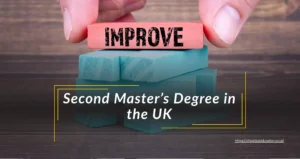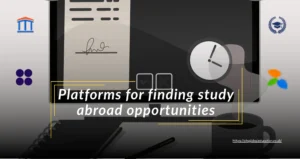I. Introduction
For international students pursuing education in the UK, obtaining Permanent Residency (PR) is more than a legal status; it is a key to long-term stability and growth. PR grants individuals the freedom to live, work, and contribute to the UK without the constraints of a time-limited visa. Beyond the legal benefits, PR unlocks opportunities for accessing public services, further education, and family reunification. This section will delve into the pivotal role that PR plays in an international student’s journey, both as a commitment to the host country and a gateway to a myriad of personal and professional opportunities.
A.Setting the Context for the Challenges and Opportunities in the Process
While the prospect of gaining PR is enticing, the journey is not without challenges. International students face a complex immigration system, stringent eligibility criteria, and a variety of visa limitations. However, understanding these challenges is crucial to navigating the process successfully. This section will set the stage for the comprehensive guide, outlining the opportunities that PR presents and acknowledging the hurdles that international students may encounter along the way.
II. Understanding the UK Immigration System
A.Overview of the Tier 4 (Student) Visa and Its Limitations
The Tier 4 (Student) visa is the initial step for international students entering the UK. This subsection will provide a detailed exploration of the visa, its privileges, and its limitations. It will address the duration of stay, work restrictions, and the dependence on a specific educational institution. Understanding the Tier 4 visa lays the foundation for international students looking to transition from temporary residency to PR.
B. Introduction to the Various Routes for Obtaining PR in the UK
This subsection will introduce international students to the diverse pathways leading to PR in the UK. From skilled worker routes to family-based options and investor routes, each pathway has its unique requirements and advantages. By providing an overview of these routes, students can begin to assess which one aligns best with their personal circumstances and future goals.
III. Eligibility Criteria for PR
A.Length of Stay and Continuous Residency Requirements
One of the fundamental criteria for PR is the length of stay in the UK and maintaining continuous residency. This subsection will delve into the specifics of these requirements, clarifying the duration needed before becoming eligible for PR and the implications of any breaks in residency.
B. Financial Stability and Proof of Self-Sufficiency
Financial stability is a key consideration for PR eligibility. Here, we will explore the financial requirements, including proof of self-sufficiency, to demonstrate an individual’s ability to support themselves and contribute positively to the UK economy.
C. Language Proficiency Requirements
Language proficiency is often a prerequisite for PR. This subsection will detail the language proficiency standards, highlighting the importance of demonstrating adequate English language skills through recognized tests or qualifications.
D. Employment and Contribution to the UK Economy
Contributing to the UK economy is a central aspect of many PR routes. This section will outline the employment criteria and the role individuals play in enhancing the economic landscape, emphasizing the significance of their contributions to securing PR.
IV. Choosing the Right Pathway
A. Exploring the Various Routes to PR
Building on the introduction to PR routes, this section will offer a more in-depth exploration of each pathway. From the skilled worker route, family route, to investor routes, readers will gain insights into the specific requirements and benefits of each, aiding them in making informed decisions based on their individual circumstances and aspirations.
B. Assessing Personal Circumstances and Choosing the Most Suitable Pathway
Assessment is a crucial step in selecting the right PR pathway. This subsection will provide guidance on evaluating personal circumstances, skills, and future goals to help international students identify the most suitable route for their PR journey.
V. Tier 2 (General) Skilled Worker Route
A. Overview of the Tier 2 (General) Visa
The Tier 2 (General) Skilled Worker route is a common pathway for international students seeking PR. This section will provide a comprehensive overview of the visa, detailing the eligibility criteria, sponsorship requirements, and the importance of obtaining a job offer from a UK employer.
B. Criteria for Sponsorship and Obtaining a Job Offer
Sponsorship is a pivotal aspect of the Tier 2 route. This subsection will explore the criteria for sponsorship, the responsibilities of the sponsoring employer, and the process of securing a job offer – a crucial step in the PR journey.
C. Navigating the Points-Based System
The UK operates on a points-based immigration system, and understanding this system is vital for success. This section will break down the points-based assessment, outlining how individuals can accrue points through various criteria, such as skills, salary, and qualifications.
VI. Tier 1 (Investor) Route
A. Introduction to the Tier 1 (Investor) Visa
For those with significant financial resources, the Tier 1 (Investor) route offers a pathway to PR. This subsection will provide an introduction to the investor visa, its eligibility criteria, and the minimum investment requirements.
B. Eligibility Criteria and Investment Requirements
Exploring the eligibility criteria and investment benchmarks is essential for prospective investor visa applicants. This section will delve into the financial thresholds, demonstrating the commitment required to secure PR through the investor route.
C. Demonstrating a Commitment to the UK Economy
Beyond financial investment, the Tier 1 (Investor) route emphasizes a commitment to the UK economy. This subsection will detail how applicants can showcase their dedication to contributing positively to the country’s economic landscape.
VII. Tier 1 (Exceptional Talent) Route
A.Overview of the Tier 1 (Exceptional Talent) Visa
Exceptional talent in specific fields can open doors to PR through the Tier 1 (Exceptional Talent) route. This section will provide an overview of the visa, highlighting the sectors – arts, humanities, science, and technology – where exceptional talent is recognized.
B. Criteria for Endorsement and Application Process
To qualify for the Tier 1 (Exceptional Talent) route, individuals must secure endorsements. This subsection will outline the criteria for endorsement and guide applicants through the application process, emphasizing the importance of showcasing exceptional achievements and contributions in their respective fields.
C. Showcasing Exceptional Achievements and Contributions
Success in the Tier 1 (Exceptional Talent) route hinges on showcasing remarkable accomplishments. This section will offer insights into the types of achievements and contributions that authorities look for, providing practical tips for building a compelling case.
VIII. Family Route
A. Exploring the Family Reunion and Settlement Options
For international students with family ties in the UK, the family route is a viable option. This subsection will explore family reunion and settlement options, elucidating the eligibility criteria and the steps involved in building a strong case for PR through family connections.
B. Spousal and Dependent Visas – Eligibility and Requirements
Family-based PR often involves spousal and dependent visas. This section will delve into the eligibility criteria and specific requirements for these visas, offering a comprehensive understanding of the family route.
C. Building a Strong Family-Based PR Case
Successfully navigating the family route requires building a robust case. This subsection will provide guidance on compiling the necessary documentation, demonstrating the legitimacy of family ties, and ensuring a smooth application process.
IX. Permanent Residency Application Process
A. Document Preparation and Gathering Evidence
Once the appropriate PR pathway is chosen, the application process begins. This section will guide international students through the meticulous process of document preparation, ensuring they gather the necessary evidence to support their application.
B. Completing the Application Form and Paying Fees
Understanding the intricacies of the application form is crucial for a successful submission. This subsection will provide insights into completing the form accurately, along with details on fee payment processes.
C. Submitting the Application and Attending Biometrics Appointments
The final steps in the application process involve submission and biometrics appointments. This section will offer a comprehensive guide on the submission process, highlighting key considerations, and preparing applicants for their biometrics appointments.
X. Challenges and Solutions
A. Common Challenges Faced by International Students in the PR Process
The PR journey is not without obstacles, and this section will explore common challenges faced by international students. From navigating complex immigration regulations to addressing financial constraints, understanding these challenges is the first step in overcoming them.
B. Strategies and Tips for Overcoming Obstacles
Building on the identification of challenges, this subsection will provide practical strategies and tips for overcoming obstacles in the PR process. From financial planning to enhancing employability, readers will gain valuable insights into maximizing their chances of success.
XII. Conclusion
Summarizing the key points from the comprehensive guide, this concluding section will reiterate the importance of PR for international students in the UK. It will offer encouragement and motivation, reinforcing the notion that PR is not just a legal status but a transformative milestone that opens doors to a brighter future in the United Kingdom.




